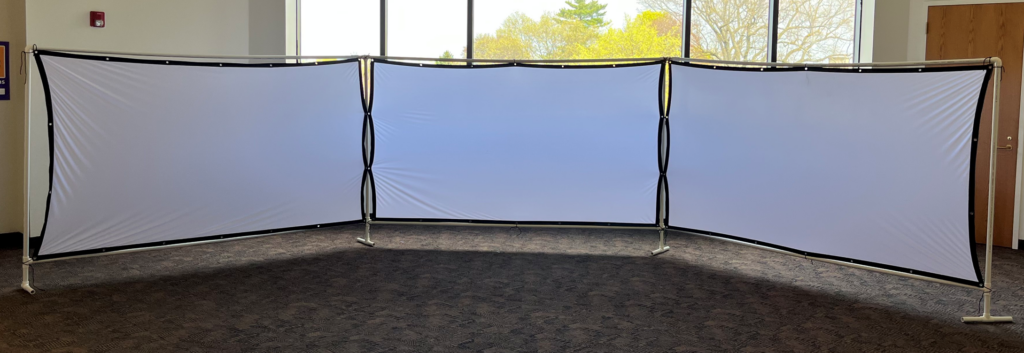Team
- Thomas Karpishin
- Joshua Teague
- Sizheng Zhang
Mentor
Professor Greg Schmidt
Abstract
Our Group’s Senior Design Team was tasked with designing a museum exhibit for RMSC that offered a fun experience for participants of all ages and demonstrated Optics-Related concepts. To accomplish this task, our Team decided to focus our exhibit on experiencing the eyesight of different animals.
Design Setup


Significance
One reason why our Team chose to work with this specific topic is due to its potential significance to the RMSC. Since the museum contains both Optics and Wildlife exhibition areas, this exhibit could one day serve as a bridge between the two subject matters.
Method
- Field of View
In order to capture media containing a wide FOV, our team used a 360° camera (Insta360 One X2). Each screen had an area of 4.05 meters giving a total screen area of 12.15 meters which was designed to simulate a total field of view of around 300°.
- Color Perception
In order to represent the increased perceived spectrum of a honeybee, a digital editing process was used to adjust the colors. Because honeybees have more sensitivity to higher-energy wavelengths, blues and violets become more apparent in the image, and lower-energy wavelengths are not detected as strongly. For the bee vision representation, a script titled “toBeeView” was utilized to simulate the compound eye nature.
- Resolution
To simulate the differences in resolution seen by the eagle versus the human eye, a program developed by Empirical Imaging called the micaToolbox was used. By utilizing the “AcuityView” function of the Quantitative Color and Pattern Analysis tool, the correct visual acuities were simulated.
Final Processed Images
In Summary, our Senior Design Team has successfully proposed a Museum Exhibit Design for an immersive simulation of Animal Vision including an image processing protocol for simulating the visual systems of different animals, a schematic for the physical setup for the exhibit, and a merged frame constructing which can be used to display the processed media. In addition, our Team has provided short informational Texts which can be displayed in tandem with the exhibit itself in order to explain the fundamental optical concepts being demonstrated in the exhibit itself.
Want to know more? Contact us!
- Thomas Karpishin – tkarpish@u.rochester.edu
- Joshua Teague – jteague3@u.rochester.edu
- Sizheng Zhang – szhang87@u.rochester.edu

